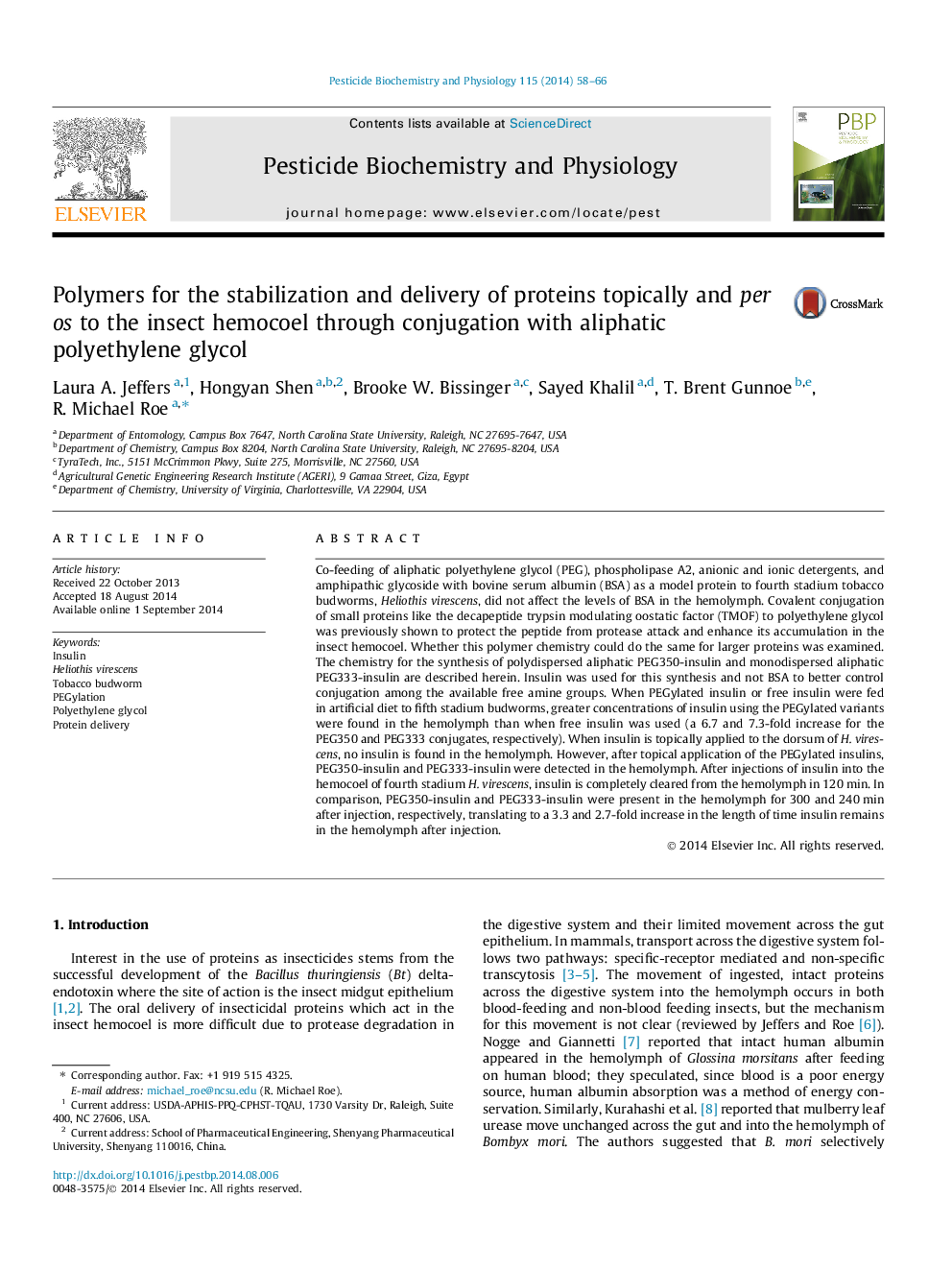| کد مقاله | کد نشریه | سال انتشار | مقاله انگلیسی | نسخه تمام متن |
|---|---|---|---|---|
| 2009135 | 1541784 | 2014 | 9 صفحه PDF | دانلود رایگان |
• Co-feeding of PEG derivative or surfactants with bovine serum albumin (BSA) had no effect on BSA levels in hemolymph.
• Synthesis of polydispersed aliphatic PEG350-insulin and monodispersed aliphatic PEG333-insulin are described.
• PEGylated insulin was higher in hemolymph than free insulin when fed in diet in three caterpillar species.
• PEGylated insulin but not insulin when applied topically resulted in the detection of insulin in hemolymph.
• PEGylation was shown to decrease insulin turnover in vivo in budworm hemolymph and in vitro in plasma.
Co-feeding of aliphatic polyethylene glycol (PEG), phospholipase A2, anionic and ionic detergents, and amphipathic glycoside with bovine serum albumin (BSA) as a model protein to fourth stadium tobacco budworms, Heliothis virescens, did not affect the levels of BSA in the hemolymph. Covalent conjugation of small proteins like the decapeptide trypsin modulating oostatic factor (TMOF) to polyethylene glycol was previously shown to protect the peptide from protease attack and enhance its accumulation in the insect hemocoel. Whether this polymer chemistry could do the same for larger proteins was examined. The chemistry for the synthesis of polydispersed aliphatic PEG350-insulin and monodispersed aliphatic PEG333-insulin are described herein. Insulin was used for this synthesis and not BSA to better control conjugation among the available free amine groups. When PEGylated insulin or free insulin were fed in artificial diet to fifth stadium budworms, greater concentrations of insulin using the PEGylated variants were found in the hemolymph than when free insulin was used (a 6.7 and 7.3-fold increase for the PEG350 and PEG333 conjugates, respectively). When insulin is topically applied to the dorsum of H. virescens, no insulin is found in the hemolymph. However, after topical application of the PEGylated insulins, PEG350-insulin and PEG333-insulin were detected in the hemolymph. After injections of insulin into the hemocoel of fourth stadium H. virescens, insulin is completely cleared from the hemolymph in 120 min. In comparison, PEG350-insulin and PEG333-insulin were present in the hemolymph for 300 and 240 min after injection, respectively, translating to a 3.3 and 2.7-fold increase in the length of time insulin remains in the hemolymph after injection.
Figure optionsDownload as PowerPoint slide
Journal: Pesticide Biochemistry and Physiology - Volume 115, October 2014, Pages 58–66
